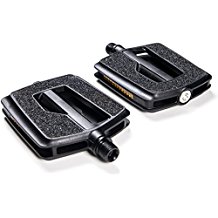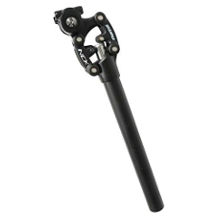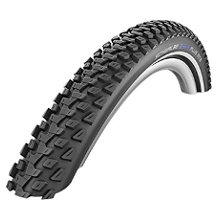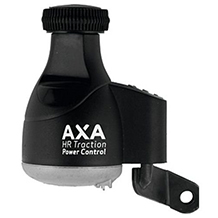Bike repair stand purchasing advice: how to choose the right product
- What you need to know
- An assembly stand is suitable for anyone who regularly carries out repair and maintenance work on their bike themselves.
- In such an assembly stand you can hang a bike to conveniently perform various works on it.
- The stands differ in their designs mainly in the number of legs, the working height and the nature of the mounting bracket.
- A handlebar mount and a tool tray are optional, but quite useful gadgets.
- Make sure that the bracket can hold the diameter of the bike frame and a sufficient load capacity. A robust material is also important.
Repairs made easy
Whether you regularly ride your bike to work or pull your beloved two-wheeler out of the basement for longer trips on the weekends: Everyone knows the moment when something needs to be screwed or a tire inflated just before departure. Anyone who stores their bike over the winter months should carry out a thorough check in the spring to ensure that it is fit to ride. Frequent drivers, on the other hand, have to be particularly concerned with the wear and tear of some parts.
An assembly stand for the bike makes it easier to work on and with it, for example, if you want to replace a tire, tighten the gear shift or even just tackle a thorough cleaning. If you want to carry out repairs on your bike yourself instead of taking it to the workshop, you would be well advised to use an assembly stand. Work with the help of such equipment is convenient: You simply lift the bike and attach the provided retaining claw to the frame or seat tube. The working height is individually adjustable so that users do not strain their knees or backs and can work in a comfortable position. When the work is done, the stand can usually be folded up and stored to save space.
How is an assembly stand constructed?
Essentially, a bicycle mounting stand consists of three components: Stand, telescopic tube and bracket including clamp.
Stand feet
Some stands stand on three or four feet; others have only two legs “stretched” forward, while an extension of the telescopic tube acts as a support to the rear. If the bike now hangs on the assembly stand above the legs, the construction does not tilt forward. For heavier bikes, a mounting stand with four legs is more suitable, as they can usually support the highest weight. A large stand area is always a positive extra. Thus, legs with a flat attachment on the foot provide a more stable stand.
Telescopic tube
The extendable tube of the mounting stand is a connecting element between the feet and the bracket. It is important that it can be adjusted to a height where it is comfortable to work on the bike. Many telescopic poles are infinitely adjustable and reach a working height of about 1.9 meters, so that even very tall people can easily work on the bike standing upright.
Bracket
Approximately at right angles, at the top of the telescopic rod is the bracket that supports the bike. This is usually fixed with a screw and can be adjusted in height, and sometimes in depth. For storage, this part must be removed on some models, on others it can be conveniently folded in.
Clamp
In the holder, the bike is clamped into the gripper arm. It is important that the clamp has a rubber coating or other gentle material on the inside so that the bicycle frame is not damaged. Manufacturers of inferior products often cut corners at this point and equip the inside of the clamps with a plastic coating. If it wears or slips, scratches can appear on the frame where it is held by the clamp.
Frame or seatpost
When clamping the wheel to the frame in the bracket, you must be careful not to pinch any brake cables or cords, as this can damage them over time. In addition, carbon frames are usually not designed to be gripped tightly with a clamp. The remedy here is a clamp with pressure adjustment. If in doubt, attach the clamp to the seat post if the device allows.
Often the clamp can be rotated so that it can also grip the wheel on the seat post or on the diagonal tube of the frame. It is important that connecting elements, rotary heads and all adjustment options mesh smoothly and do not hook, especially in areas where angles have to be adjusted and mounts have to bear a certain weight. With the help of a quick release device, you can release the clamp with a handle and remove the bike.
Additional gadgets
A practical addition to the assembly stand is a handlebar mount. This connects the stand tube to the bicycle handlebar, which is thereby fixed. So when you need to work on the front wheel, it doesn’t wobble back and forth. Also useful is a tool tray, which is often in the form of a small tray attached to the stand. There you can store tools, screws and other small parts.
Important properties
A mounting stand must be designed so that you can easily hang your bike. However, if you have a particularly heavy bike or one with a thick frame, the stand may not meet your needs. Therefore, in addition to the maximum working height, pay particular attention to the load capacity and the maximum opening of the holder clamp.
Load capacity
A particularly important factor is the load capacity of the assembly stand. If it cannot hold the weight of the bike, the stand will become unstable and the stand could tip over. Therefore, weigh your bike and match manufacturer’s specifications. Most bicycle assembly stands can withstand a weight of at least 20 kilograms, so should be compatible with everyday and racing bikes. However, if you want to clamp a particularly heavy bike, such as an e-bike, into the mount, not every one will be designed for it. In this case, fall back on more sustainable model. There are stands that support up to 40 kilograms and more. If you load the assembly stand beyond its load capacity, material fatigue and resulting damage to the fixture may occur.
Clamp width
It must be possible to open the mounting stand bracket far enough to hold the frame. In the case of particularly thick frames or tubes with an oval diameter, it may not be possible for them to be encompassed by every holder clamp. They can be adjusted and adapted to different models of bicycles, but are limited to a certain maximum value, for example, four or seven centimeters. If you have several bikes, you should also make sure that the mounting stand is compatible for all of them.
Material
Bicycle mounting stands are made of different materials. It is important that it is sturdy as well as durable and can stand it if you accidentally scrape along it with your bike or tools every now and then. Steel and aluminum are often used because they are very robust. Aluminum is also very light, which is an advantage if you have to assemble and disassemble or transport the assembly stand frequently. On the other hand, steel is cheaper and the stands made from it are correspondingly cheaper.
Keeping an eye on quality
Plastic is often used, especially for less expensive models. However, connecting pieces such as the bracket and all supporting elements should not be made of it, because plastic is not particularly stable. When buying, make sure that the stand has a test seal such as GS or TÜV, so that a suitable quality and safety standard is guaranteed.
Dimensions and weight
When folded, a bicycle assembly stand usually takes up no more space than a two-person tent in your pocket. The legs of the stand can be retracted or folded up, and the telescopic pole can often be compressed to 20 centimeters or less. The cross-connection to the retaining clip is retractable in many cases, but sometimes it must be dismantled. In such cases, when the dismantled stand consists of more than one part, it is recommended to use a storage bag, so that you always have all the components together. The weight is usually kept within the range of about five to seven kilograms. Small stands made of aluminum are sometimes lighter, but in rare cases they weigh about ten kilograms.
How much do bike mounting stands cost?
As with so many products, you can choose from a wide range of costs for assembly stands. The most expensive ones are not always the best. However, if you have a high quality bike, you should put on the same quality bike accessories. Inexpensive assembly stands are already available for a two-digit amount and can be quite enough for casual screwdrivers. Often they do not have too much load capacity, but they cope well with light bikes, such as racing or BMX bikes, simple city as well as children’s bikes. More expensive assembly stands sometimes cost over 250 euros. On the other hand, they are often more versatile, robust and stable and can even lift heavy bikes such as e-bikes or grip the frames of mountain bikes.
Other types of bike mounting stands
In addition to the assembly stand with gripper arm, there are other types that allow you to perform various work on the bike. For professionals and very conscientious screwdrivers who take a lot of time for touch-ups, a swiveling assembly stand is helpful. With this, the front wheel of the bike is removed and the fork is fixed to an inclinable mounting platform; the frame rests further back. The bike stands more securely on these stands than on those with a retaining clip. They are also more compact.
Through a bike rack attached to the ceiling or wall, the bike can be hung on hooks. Such a device is intended more for storage. However, you can also easily change tires, clean the wheel or adjust the brakes in this way. The wheel only swings freely during screwing movements – so not all work is possible without problems. Moreover, in such a case, height adjustability is not possible and you would have to drill holes on the wall for the bracket. In return, the hanging device can withstand a very high weight and does not take up space as a footprint.
Finally, there are compact assembly stands, which are only about half a meter high and are more designed to permanently lift a wheel of the bike. This allows you to make adjustments to the gears or handlebars and clean the chain. Minor repairs are quite possible and its compact dimensions make the stand a good option for occasional screwdrivers. However, if you regularly work on your bike, you should choose a more professional option.

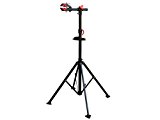

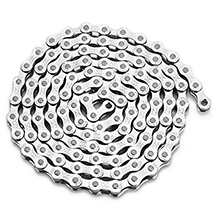
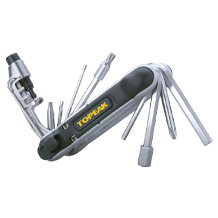
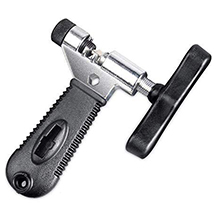









 3,981 reviews
3,981 reviews
